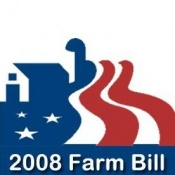New US Federal Office Puts Ecosystem Markets at Forefront of Resource Management
Ecosystem Marketplace has long envisioned a world in which farmers and ranchers are paid to save natural ecosystems that filter water, sequester carbon, and preserve wildlife – in addition to growing corn and hay. Now the US Department of Agriculture has taken a giant step towards realizing that vision as part of a massive realignment of the management of natural resources.

Ecosystem Marketplace has long envisioned a world in which farmers and ranchers are paid to save natural ecosystems that filter water, sequester carbon, and preserve wildlife – in addition to growing corn and hay. Now the US Department of Agriculture has taken a giant step towards realizing that vision as part of a massive realignment of the management of natural resources.
18 December 2008 | It took the formation of the Securities and Exchange Commission to create a trustworthy market for securities in the United States, and it took the formation of the Commodity Futures Trading Commission to legitimize futures and options trading by offering clear regulations backed by the rule of law.
Now, a similar evolution is taking place in ecosystem markets, which supporters believe have the power to save the planets natural resources by identifying their economic value and encouraging Payments for Ecosystem Services.
The concept has progressed dramatically over the past two decades, with burgeoning markets for biodiversity and water quality emerging from California to Dar es Salaam.
In practice, however, the only real successes have come in cap-and-trade emissions schemes like the ground-breaking reduction of SO2 emissions in the United States and, of course, the massive carbon markets.
Time and again, experience has shown that such schemes hinge on government support and regulatory drivers – both of which have been sporadic in carbon trading and woefully lacking in both water quality and biodiversity trading.
Bringing Order out of Chaos
That looks set to change in the United States, where the Department of Agriculture (USDA), under a mandate embedded in the 2008 Farm Bill to promote incentive-based conservation, has announced the formation of an Office of Ecosystem Services and Markets (OESM), which will be headed by USDA Forest Service vet Sally Collins, who has won accolades for introducing market-based mechanisms into the Forest Service’s sustainable land management policies.
She will report directly to the Secretary of Agriculture, and the new office is charged with providing “administrative and technical assistance to the Secretary in developing the uniform guidelines and tools needed to create and expand markets for these vital ecosystem services,” according to a press release posted on the USDA’s web site.
Department of Homeland (Environmental) Security?
The OESM will also support the Conservation and Land Management Environmental Services Board, a massive oversight board comprised of the Secretaries of Interior, Energy, Commerce, Transportation, and Defense – as well as the Chairman of the Council of Economic Advisors, the Director of the White House Office of Science and Technology, the Administrator of the Environmental Protection Agency, and the Commander of the Army Corps of Engineers.
The makeup of that board is, obviously, contingent on appointments to be made under the incoming Obama administration.
![]()
Steve Zwick is Managing Editor of the Ecosystem Marketplace. He can be reached at [email protected].
Please see our Reprint Guidelines for details on republishing our articles.
Additional resources
Please see our Reprint Guidelines for details on republishing our articles.

